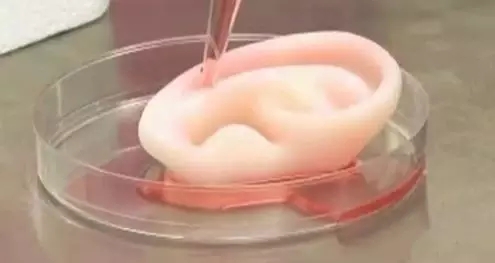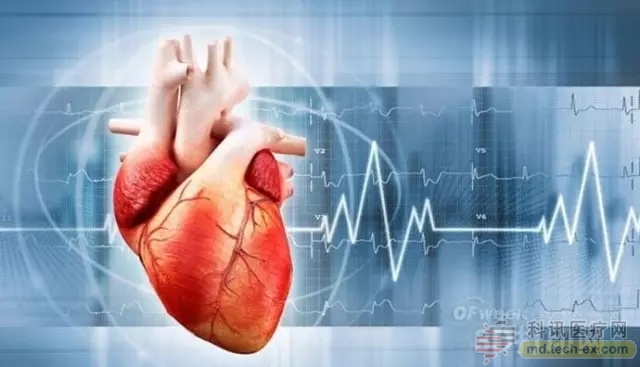Release date: 2016-09-07
3D Bio-Print is a very cross-discipline and fusion discipline. It combines technologies in various related fields such as machinery, materials, and cells. It is a 3D additive manufacturing principle that utilizes active materials such as biological materials, growth factors, and cells. Interdisciplinary and cross-disciplinary new regenerative medicine engineering technology aimed at reconstructing human tissues and organs.
History of tissue medicine and regenerative medicine
The rise of tissue engineering in the 1980s and the regenerative medicine technology introduced by stem cells have led to the hope of solving organ defects. After the 20th century, more and more scientists joined the ranks of promoting the development of regenerative medicine technology. By 2010, the entire regenerative medical industry will be gradually restructured and ushered in a benign development. As of 2014, there are more than 700 tissue engineering and regenerative medicine-related companies around the world. There are hundreds of medical products listed on the skin, bone, heart and cardiovascular diseases. It is considered to be very promising. An industry.

Traditional tissue engineering
There are two main methods of traditional tissue engineering:
One is the use of biocompatible materials or animal derived materials. Due to the limitations of materials in terms of function and manufacturing methods, the effects of repair and replacement are often flawed. For example, the achilles tendon of cattle is constructed into artificial skin containing Collagen by decellularization, because it is a foreign body and does not contain repair and replacement. The active substance has great defects in efficacy;
The other is to plant the cells on a pre-formed stent. Due to the resolution of the implanted cell technology and the limitation of the internal structure of the scaffold material, the position and distribution of the cells forming the bionic tissue cannot be precisely controlled, and there are limitations in stability and size, which seriously hinders the industrialization of tissue engineering.
3D bioprinting
Because 3D bio-printing can precisely control the position and distribution of materials and cells, it can personally construct tissue engineering products with the features of maximum biomimeticity and minimal disability, which solves the problem of limiting mass production in stability, speed and The cost is superior to the traditional tissue engineering method, so it has a wider application prospect in clinical.
The development and application of 3D printing in medical is roughly divided into four levels:
Materials that are not biocompatible for use in medical models and in vitro medical devices;
Biocompatibility requirements, to enter the human body, but not degradation, such as ceramics, is a concept of permanent implantation;
The material is degradable and can also stimulate the body to repair itself, but it cannot break through the limitations of self-repair;
Using active cells and extracellular matrices as materials, and cells as intervening units, it is a true modern 3D bioprint.

3D bioprinting technology three elements
The typical step of 3D bio-printing is to first use the medical image (CT or MR) for data import, and then use various algorithms of the computer to assist in analyzing the patient data, output various data required for printing and present it to the printer, using cells, The natural materials and the like are printed, and the whole process also includes the mature process after printing.
The technical elements of 3D bioprinting are materials, printing systems (software), and mature systems.
3D Bio Printer:
3D bioprinters come in two design concepts: in-situ printers, which are technologies that print directly on the part of the human body, such as skin-in-situ printers for skin burn treatments; and non-in-situ printers, which are used to make equipment. According to the 3D printing mode (header), printers can be divided into three categories:
Inkjet bioprinter: uses thermal inkjet or piezoelectric pulse to generate pressure, lower cost and better resolution;
Micoextrusion bioprinter: Various forms, can be printed by continuous extrusion method using pneumatic, piston or screw extrusion. It has many compatible materials, wide resolution range, less damage to cell activity, and wide compatibility with cells. Relatively broad, the resolution is lower than the other two modes;
Laser-assisted bioprinter: Laser-assisted laser light that is focused on the absorber sheet pushes the printed material onto the collector for printing with high resolution and high cost.
Print material requirements:
Printability, stability, convenient cross-linking, small volume change, easy transportation, assembly, operation, and good biocompatibility and cytocompatibility, can not cause systemic damage to the human body. At present, the approved materials that can be used clinically are mainly natural polymers (used to form cell hydrogels), in addition to some synthetic polymers, polymer degradable materials and the like.
Cell material requirements:
The cells are readily available and can be expanded in large quantities;
No or very low immunogenicity;
Higher purity or a single direction of differentiation.
Bioreactor:
Bioreactors are very important for clinical usability development. The printed precursor material needs to undergo maturation, proliferation and culture processes in the bioreactor. Bioreactors are different from cell cultures. When the volume of printed matter is large, the existence of hypoxia problems needs to be solved, such as the invention of nanomaterials capable of releasing oxygen; for specific tissues, some specific stimulations required by cells can be matured, such as cycles. Sexual stretching promotes the maturation of cardiomyocytes, which is a problem that bioreactors need to solve.
3D bioprinting implant development trend
According to statistical analysis, the most published articles in the field of tissue engineering in the field of application, micro-extrusion, microfluidics, laser-assisted and other technologies are also very popular from the printing method of the research field; from the perspective of patent application, 3D printing technology The application in the medical field is advancing by leaps and bounds. Many international companies have a large number of patents. The industrial layout mainly focuses on cell hydrogels, printing construction methods, mechanical equipment and bioreactors.
Development direction of 3D bio-printing technology
The development trend of 3D bio-printing technology is mainly in the following aspects:
Bioprinting technology, cell-friendliness, compatibility, integration of material cross-linking methods, integration with software, and breakthroughs in size and application;
Three elements, optimization of biological materials and cell selection;
Vascularization is essential for the printing of complex organs, but bioprinting is currently focused on simple tissue research.
3D Bio Print Trilogy
At present, scientists have successfully printed organs and tissues such as blood vessels, heart valves, muscles, nerves and skin.
Thoughts on the development of 3D bioprinting industry
To have a global perspective, whether it is for the industrial chain or the dispersion of technology, the 3D bioprinting industry has a wide range of globalities;
Whether it is market demand or product research and development, we must keep close to clinical needs, starting from clinical needs, and early involvement in product development and business model polishing;
World-renowned company
The commercial company that started earlier in the field of 3D bioprinting is Organovo, which specializes in developing commercial bioprinters and printing biological organs. Organovo works with a number of large companies to print organs for drug toxicity assessment and drug screening, a creation that greatly solves the dilemma of not being able to simulate in vivo conditions in drug development. There are also many companies, such as CollPlant, CYFUSI, etc., all of which have their own fields. There are also many technology frontier companies in China, such as Knop, Blu-ray Inno, Knauf, and Maipu Regeneration. I hope everyone can work together to promote this field.
Source: 3D printing
Unlike fresh fruits, fruit powder is made by advanced technologies so to extend the shelf life and versatility. We have Freeze Dried Fruit Powder and spray dried fruit powder. The star freeze dried powder are strawberry powder, raspberry powder, pink pitaya powder, blueberry powder and banana powder. Our fruit powder have no added sugar, sweeteners, preservatives,colors or flavorings which makes it perfect additive to food and beverage like ice cream, smoothie and sauce. Fruit powder promote bowel function and clean toxins, lower cholesterol absorption.
Fruit Powder,Mulberry Powder,Banana Powder,Apple Powder
YT(Xi'an) Biochem Co., Ltd. , https://www.ytherblifes.com